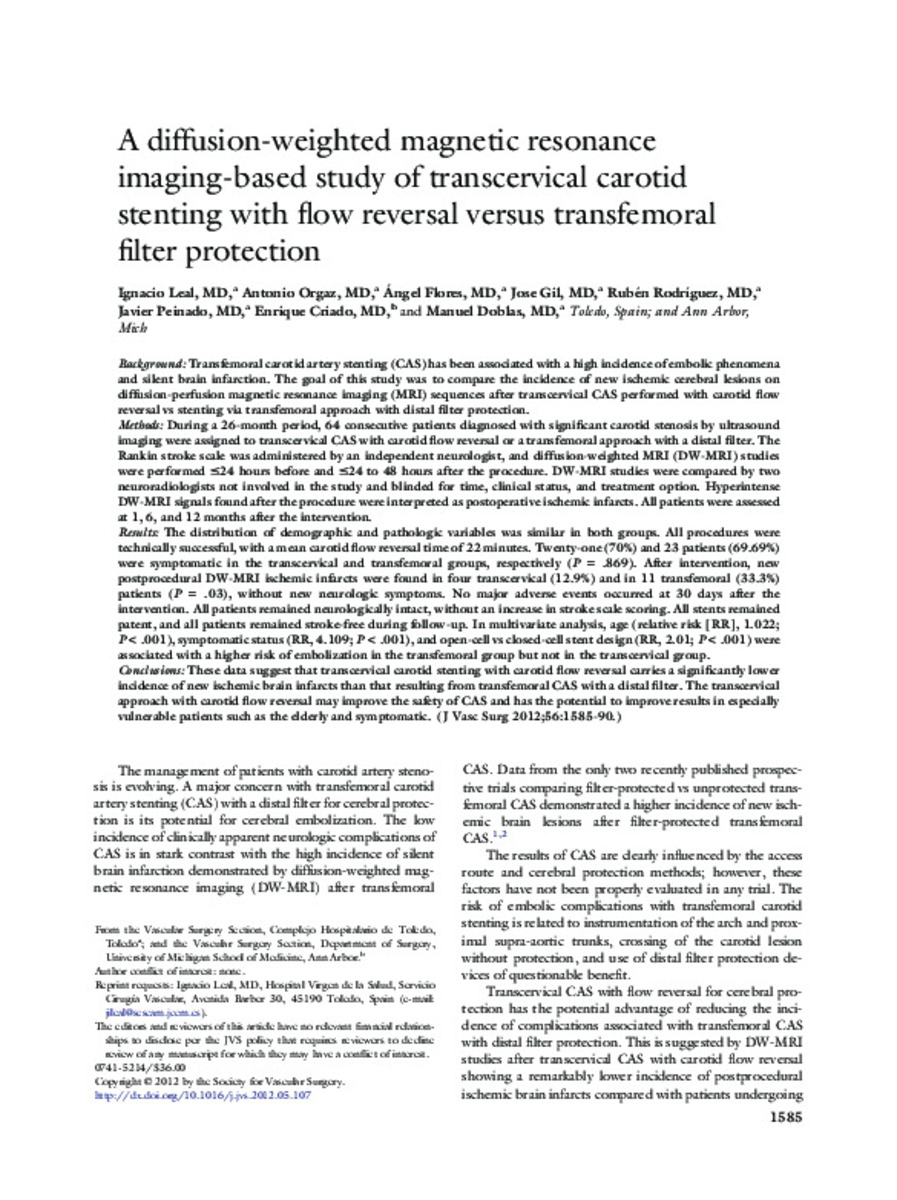A diffusion-weighted magnetic resonance imaging-based study of transcervical carotid stenting with flow reversal versus transfemoral filter protection
Keywords:
Materias Investigacion::Ciencias de la Salud::Cirugía
Diffusion-weighted magnetic resonance
Transcervical carotid
Citation:
Leal-Lorenzo, J.I. (José Ignacio); Orgaz, A. (Antonio); Flores, A. (Ángel); et al. "A diffusion-weighted magnetic resonance imaging-based study of transcervical carotid stenting with flow reversal versus transfemoral filter protection". Journal of Vascular Surgery. 56 (6), 2012, 1585 - 1590
Statistics and impact
0 citas en

Items in Dadun are protected by copyright, with all rights reserved, unless otherwise indicated.







